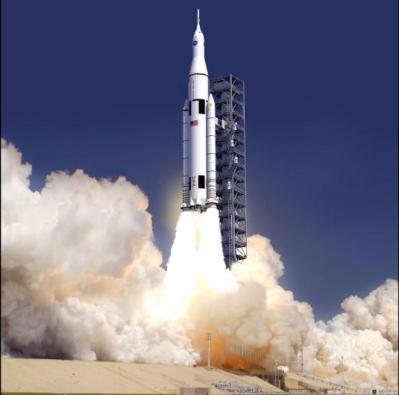NASA has downselected four companies to work on advanced boosters for the Space Launch System (SLS), which will replace ex-Space Shuttle hardware to power the launch vehicle through the lower, thicker part of Earth's atmosphere.
The space agency selected six projects from four companies to enter negotiations for contract award. Huntsville, Alabama-based Dynetics was a big winner, with three risk-reduction actions selected for the company's revamp of the Rocketdyne F-1, among the largest and most powerful rocket engines ever built. The projects are listed as the F-1 engine, main propulsion and structures risk reduction tasks.
Aerojet, ATK and Northrop Grumman also won the downselect for their respective proposals. ATK is building a five-segment solid rocket based on its boosters for the canceled Ares launch vehicle programme, while Aerojet is examining a powerful derivative of the AJ-26, called AJ-1000. Northrop is also building a large booster engine.
 |
|---|
©NASA |
The boosters will not be used until at least the second SLS flight, replacing legacy Space Shuttle solid rocket boosters. The advanced boosters are necessary to launch the full weight of the SLS Block 2, which will launch 130 metric tonnes into Earth orbit or escape velocity. The launch vehicle is not expected to be ready until 2021. Until then, SLS Block 1, capable of launching 70t, will launch in 2018.
SLS is planned to launch the Lockheed Martin Orion capsule on crewed missions outside Earth orbit. While no definitive decisions have been made, planned missions include flights to Mars, a near-Earth asteroid, and a return to the moon.
Source: Flight International



















